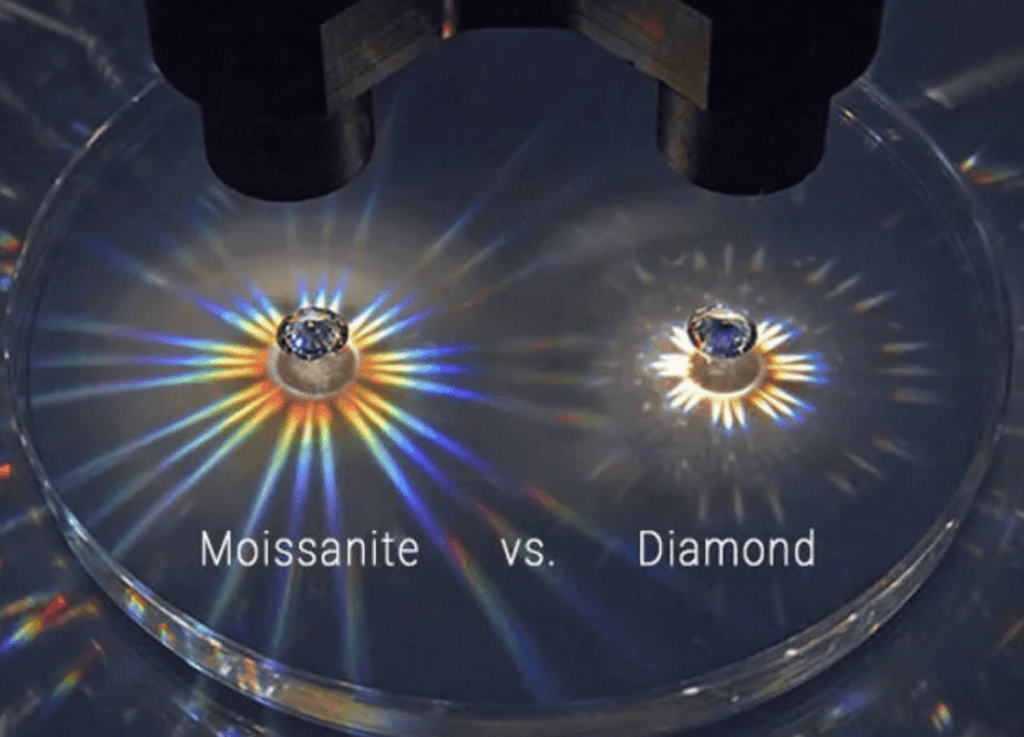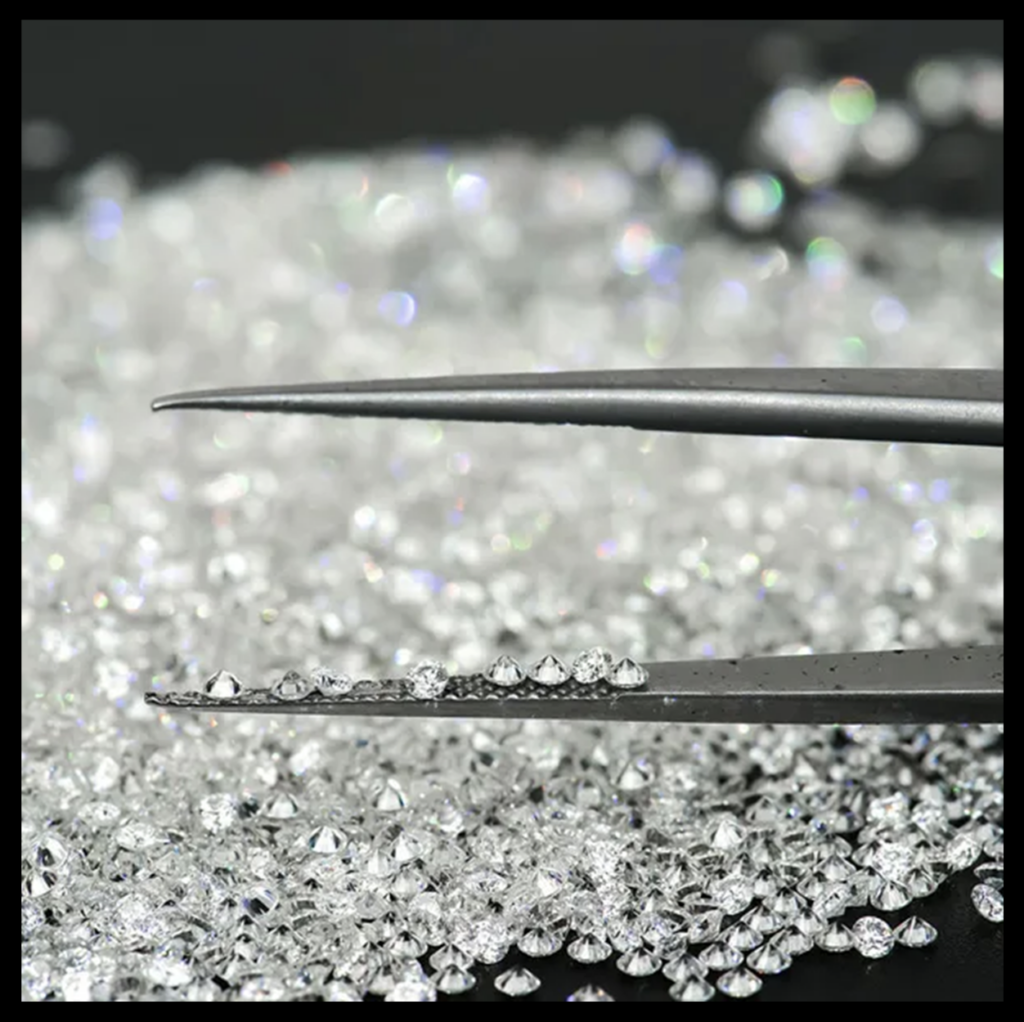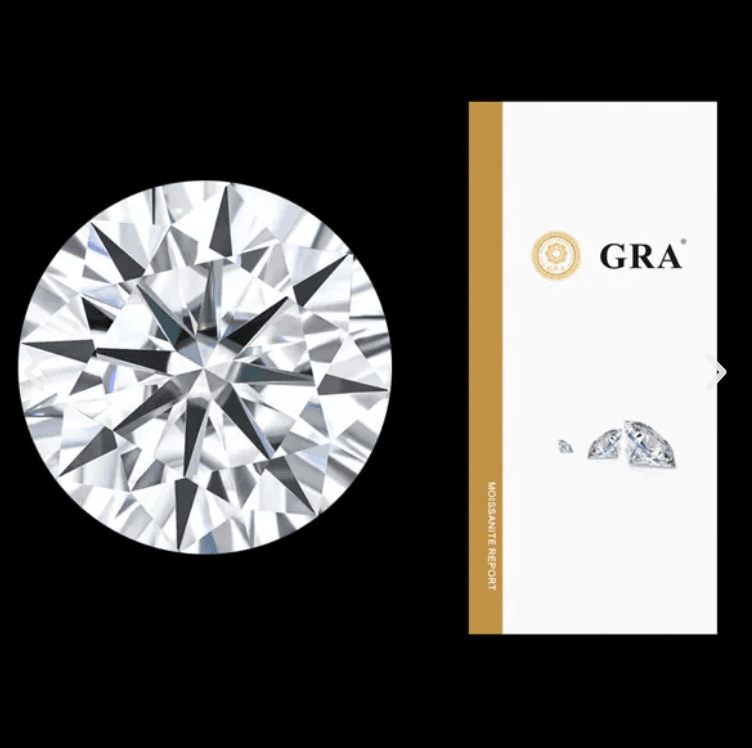Moissanite is a naturally occurring gemstone that was discovered in 1893 inside of a meteorite in Canyon Diablo, Arizona. Hence moissanites are referred to as the gemstones from the stars.
Originally thought to be diamonds, Nobel Prize winning chemist Henri Moissan determined the crystals were, in fact, silicon carbide. The gemstone was named in honour of Moissan later in his life.
Because its occurrence in nature is extremely rare and mostly only found in meteorites, moissanite is lab grown with minimal environmental impact.
More than just a diamond alternative, it is a beautiful and unique gemstone in its own right.
Choosing Lumiere moissanite over diamonds or other alternatives (such as cubic zirconia) has many advantages!
Brilliance and Sparkle: Moissanite has exceptional brilliance and fire, meaning it reflects light beautifully and sparkles intensely, similar to diamonds. This makes it a visually appealing choice.
Colour and Clarity: Moissanite typically exhibits excellent clarity and colour, with minimal inclusions and a near-colourless appearance, making it a desirable alternative to diamonds, and far superior to cubic zirconia.
Affordability: Moissanite is typically more affordable than diamonds, making it an attractive option for those looking for a stunning gemstone without the hefty price tag.
Durability: Moissanite is a very hard and durable gemstone, ranking at 9.25 (just below diamonds) on the Mohs scale of hardness. This means it’s resistant to scratching and chipping, making it suitable for everyday wear. Its hardness also means the cut is sharper than cubic zirconia resulting in a superior appearance.
Ethical and Conflict Free: Moissanite is lab created, which means it is produced in controlled environments, eliminating the ethical concerns associated with mining, such as environmental damage and human rights issues.
Uniqueness: While moissanite shares some visual similarities with diamonds, it has its own unique optical properties, such as a higher dispersion, which gives it a distinct sparkle that some people prefer.
Overall, choosing Lumiere moissanite often comes down to personal preference, budget considerations, and ethical concerns, while still offering the beauty and brilliance of traditional gemstones like diamonds.



We offer a range of options for your unique jewellery including silver, gold vermeil, gold filled through to solid 14k gold.
Gold vermeil (pronounced “ver-may”) consists of a sterling silver base covered in thick gold plating.It is higher quality and more durable than gold-plated jewellery. True vermeil includes 2.5 microns of gold.
Gold fill contains 5% of solid gold and is made through a pressure and heat bonding process. This means that a thick layer of solid gold is bonded onto the base layer, usually sterling silver or brass, to form a thick and durable layer of solid gold. Gold fill is hypoallergenic and sensitive-skin friendly.
A key difference between gold vermeil and gold-filled jeweller is how they are manufactured. Gold vermeil uses an electroplating process, whereas gold-filled uses a pressure and heat bonding process. Gold-filled has a thicker coating of gold over the base metal compared to vermeil.
Lumiere does not utilise low-quality gold-plated jewellery.